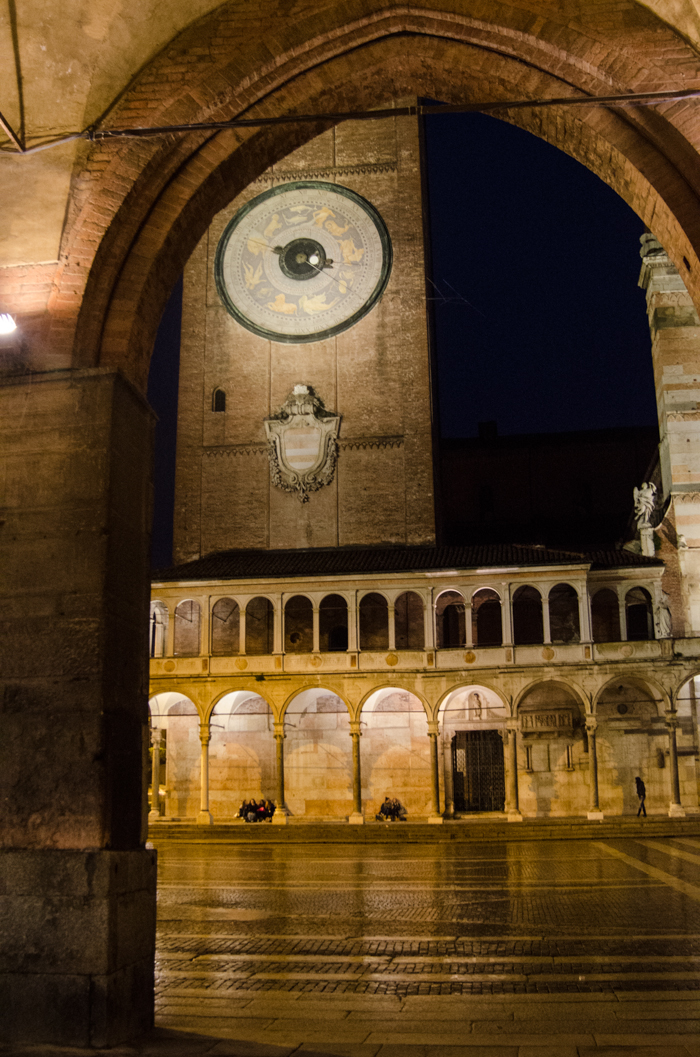
The region of Lombardia lies in northern Italy, sharing a border with Switzerland to the north, Piedmont to the west, the Veneto and Trentino-Alto Adige to the east, and Emilia-Romagna to the south. It is the largest region in the country, and Italy’s most productive farming region. It hosts a wide range of landscapes - from the Alps where we can visit Bormio on a Italy ski tour in the winter or a cycling tour of Stelvio in the summer, to the lake region - Como, Maggiore, Iseo and the western side of Lake Garda, to the fertile plains of the Po River valley. As with the other regions in Northern Italy, Lombard cuisine has more in common with that of Austria and central Europe than the cuisine of Central and Southern Italy - more emphasis on grains like rice and corn than pasta, and the use of butter, cream and cheese rather than olive oil (although olive oil is produced here too).
The Po River, the longest river in Italy, flows eastward towards the Adriatic through the southern portion of Lombardia. Several of its tributaries - Ticino, Adda, Oglio, Mincio - flow south from the lakes to the Po as it travels across the region.The fertile plains of the Po primarily produce grains, most importantly the rice for the regions most famous dish, risotto alla Milanese, cultivated in the Lomellina plains near Pavia. Other grains cultivated here include corn, used for polenta, and buckwheat, found in some versions of polenta (polenta taragna), and pizzoccheri, a buckwheat pasta.
The plains are also an ideal location to raise cattle, so veal and beef have always been an important part of Lombardia cuisine. Costalleta alla milanese (veal cutlets, breaded and sauteed in butter), osso bucco (braised veal shanks) and lesso misto, the Lombard version of bollito misto (mixed boiled meats) are a few of the traditional meat dishes found here. The area of Valtellina, way up north in the mountains is known for its Bresaola (air-dried salted beef). Lots of cows means lots of milk, which finds its way into many flavorful local cheeses, including Robiola, Crescenza, Taleggio, Gorgonzola and Grana Padano. Lodi is famous for a variety of cheeses, including Grana and mascarpone.
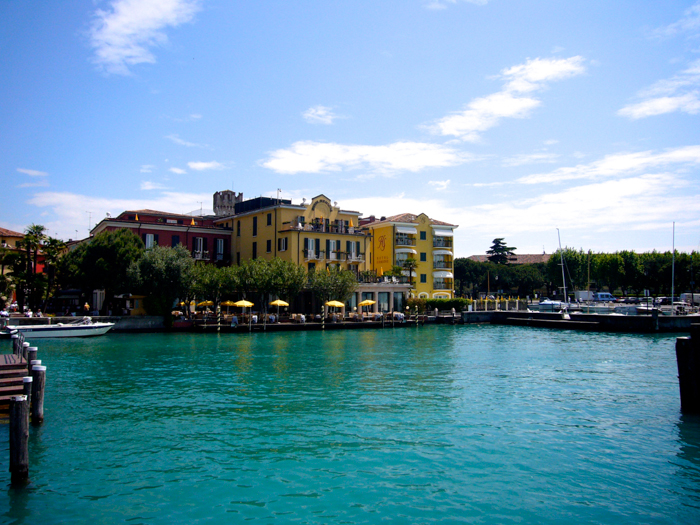
As it has no ocean coastline, the cuisine of Lombardia doesn’t typically use seafood, but the four lakes found here do supply a nice array of freshwater fish, often cooked simply, grilled or fried. Mountain streams flowing down from the Alps are a great source of trout. You will also find frogs, freshwater eels, crayfish and snails. Here in the lake districts you will also find locally produced olive oil.
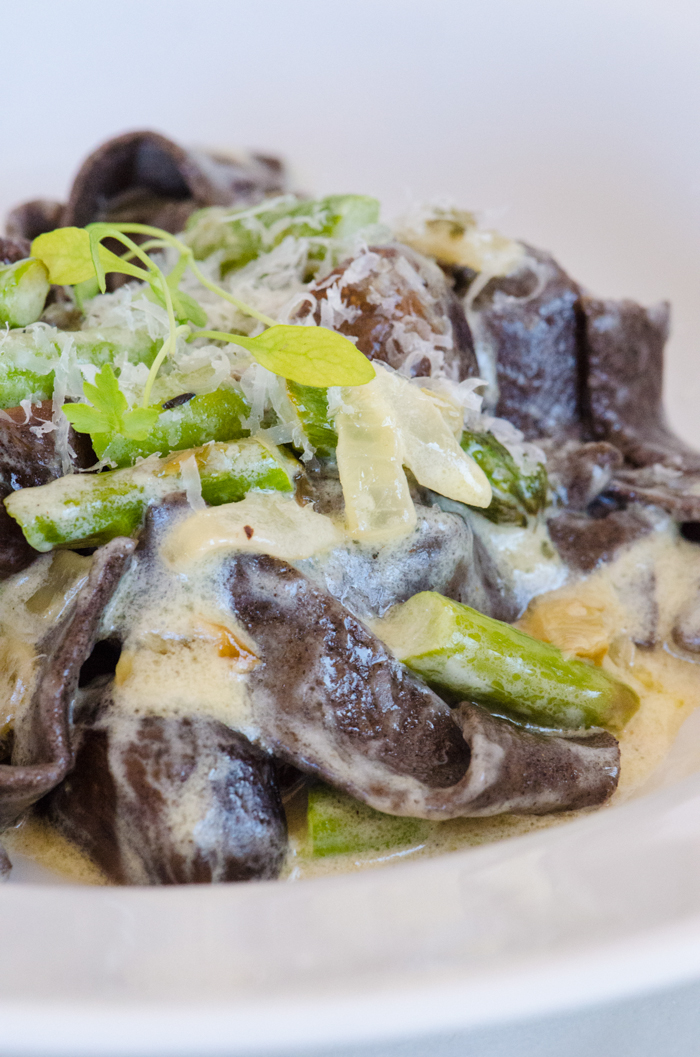
Moving north into the mountains, the climate is cooler, and the food heartier. Stews, soups, polenta served with meat or mushrooms, hearty filled raviolis and slow-braised meat dishes are favorites here. In spite of the prevalence of polenta and risottos over pasta, there are some specialty pastas made here - in addition to the pizzoccheri mentioned earlier, you will find a variety of stuffed pastas, including tortelli de zucca (made with winter squash, cheese and finely crushed amaretti almond cookies), agnolini (a smaller stuffed pasta, filled with a mixture of meats), and casônsei (filled with sausage, cheese, and bread).
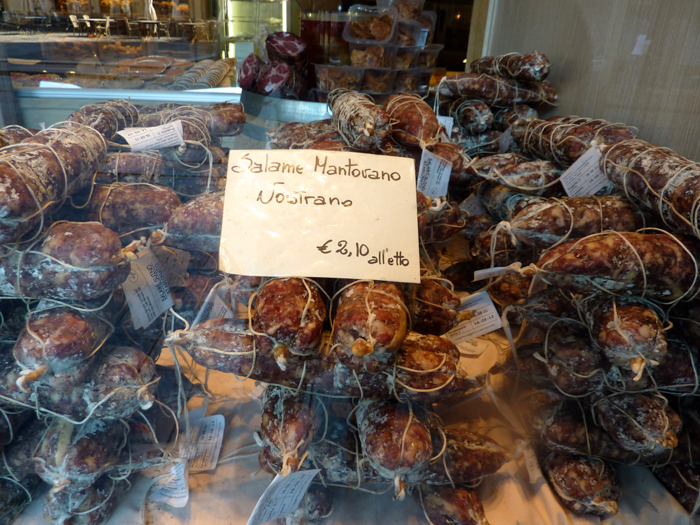
Pork is also used in many dishes. We find many local produced salume here, like mortadella and cotechino. A nice way of warming up after a ski day is with a cassoeula, a hearty stew of cabbage and pork, served with polenta.
Every region has its favorite dolce to finish off a meal, and Lombardia is no exception. It is most famous as the creator of Italy’s favorite Christmas treat, Pannetone - a sweet, eggy raised bread with raisins and candied citrus. There is also torta sbrisulona, a crisp, buttery almond cake using the local polenta. Cremona produces Torrone, a nougat made from almonds and egg whites, sweetened with honey.
As with most other regions in Italy, there is wide variety of dishes found on the tables across Lombardia, with each city and province offering its own traditional specialties. Here is just a sampling:
Minestrone alla Milanese - vegetable soup, which here in Lombardia would include rice rather than pasta.
Zuppa alla Pavese - hot beef consomme, poured over bread and an egg yolk, which cooks (a little) in the hot broth.
Risotto alla Milanese - risotto with saffron. The year 1535 began 200 years of Spanish rule in Milan, when King Charles V made his son Philip the Duke of Milan. So risotto alla milanese is the local take on paella.
Casoncelli - a stuffed pasta from Bergamo. Filled with meats, cheese, and sometimes even dried fruit and crushed amaretti cookies, served with melted butter, pancetta and sage.
Polenta taragna - a specialty of the Valtellina valley, made from buckwheat with a bit of cornmeal. Traditionally left to harden, then served sliced with melted butter and cheese.
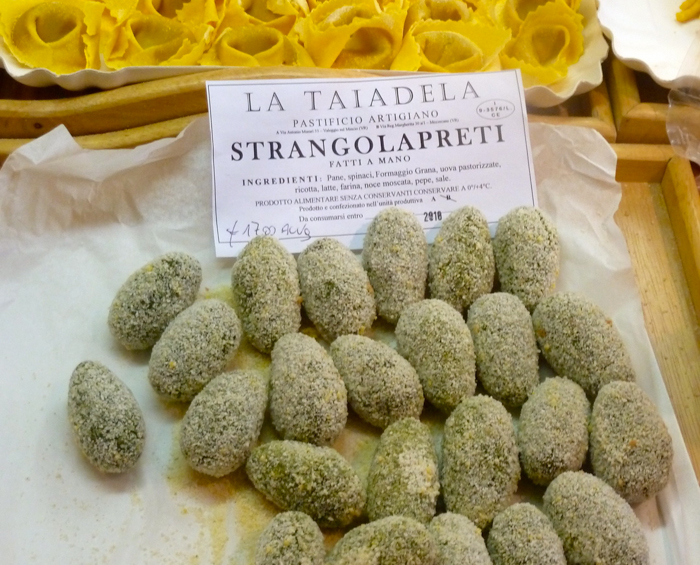
Strangolapreti - spinach gnocchi, translates to “priest stranglers”, as priests supposedly would gorge themselves on these meat-free dumplings during Lent.
Riso alla pitocca - literally translates to ‘beggar’s rice’, it really isn’t, as it includes a meat, chicken.
Polenta pasticciata - polenta pie, layers of firm polenta alternating with butter and cheese, sometimes also meats and mushrooms, baked in the oven.
Pizzoccheri - flat pasta, made with buckwheat and wheat flour, served with potatoes and beans’
Tortelli di zucca - ravioli with pumpkin filling, served with butter and sage. Very similar to cappellacci di zucca, from nearby Ferrara.
Casônsei - similar in name to the casunziei found in Cortina, this stuffed pasta is from Brescia, and contains sausage, cheese, and bread crumbs.
Cotoletta alla Milanese - breaded veal chops, sauteed in butter; this dish travelled to Vienna when Austria ruled this region, becoming Wiener Schnitzel.
Osso Buco alla Milanese - braised veal shanks, seasoned with gremolada, a combination of lemon zest, garlic and fresh parsley. Usually served with risotto alla Milanese.
Lesso Misto - several types of meat, boiled together. Here, they used better cuts of meat than in bollito misto, and a mix - beef, chicken, pork. Served with mostarda di Cremona.
Busecca - tripe cooked very slowly with herbs and vegetables, served with over bread with grated grana.
Cassoeula - a pork stew, containing various cuts of pork, pig’s foot, crackling and sausage, stewed with cabage, carrots, celery and onions. There are also versions with goose.
Stufato - beef chunks, stewed slowly with white wine, tomatoes, carrots and celery. Many traditional versions exist using donkey (stufato d’asino) or horse (stufato di cavallo).
Fritture di rane - fried frogs, frogs being a by-product of flooded rice fields.
Panettone - an egg based, yeast leavened cake with raisins and candied citrus, traditionally served at Christmas.
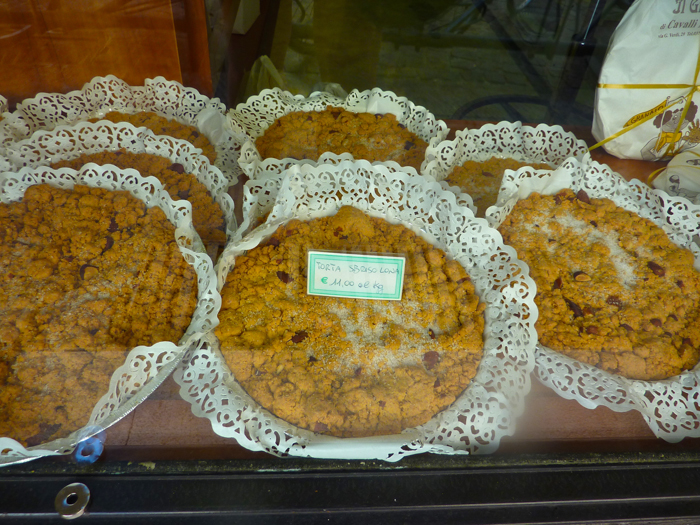
Sbrisulona - a crumbly cake made from white flour, polenta, butter, sugar and almonds.
Mostarda - from Cremona. A mixture of fruits, preserved in a sugar syrup, flavored with mustard oil and other seasonings. Traditional accompaniment to Lesso misto.
Torrone - a nougat made from egg whites, sugar, honey, toasted almonds and candied fruit.
Colomba di Pasqua - a traditional Easter cake, shaped like a dove (“Colomba”). Similar in type to a Panettone, without the raisins and candied citrus.


